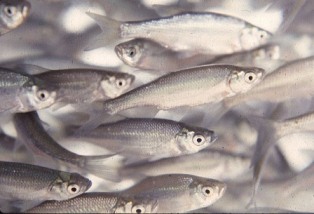Sooner or later, many ponds become contaminated with undesirable species such as bullheads, carp, buffalo, crappie, or green sunfish. Alternatively, bass-bluegill ponds may go so far out of balance that only stunted bream populations remain. In this situation, ponds may have to be drained and dried and a new stocking program established. When draining is not possible or too costly, an acceptable alternative may be to kill all fish present with a compound labeled and approved for killing fish. This practice is known as renovation. A complete list of registered fish toxicants can be found on the Internet at http://aquanic.org/jsa/wgqaap/drugguide/Appendix-B%20-Table-2-fish-toxicants.htm.
Always wear proper protective clothing and safety equipment (gloves, safety glasses, etc.) when treating water with fish toxicants. When the fish population and previous history of a pond are unknown, as when an old pond has recently been purchased, one of the simplest and most reliable management approaches is to renovate and restock. Since treatment is most effective during warm weather and recommended schedules call for fall stocking of bream, August or early September is the best time to renovate ponds in much of the country. This should allow for sufficient detoxification before restocking bream in the fall, even if repeat treatments are needed. It is essential to treat all areas and depths of the pond, especially shallow, vegetated areas. Deep areas may have to be specially treated using weighted hoses or downspout pipes to ensure coverage. Avoid stirring up too much mud, however, since this will reduce the effectiveness of the treatment. When ponds can be only partially drained, remaining pools and puddles can be treated.
